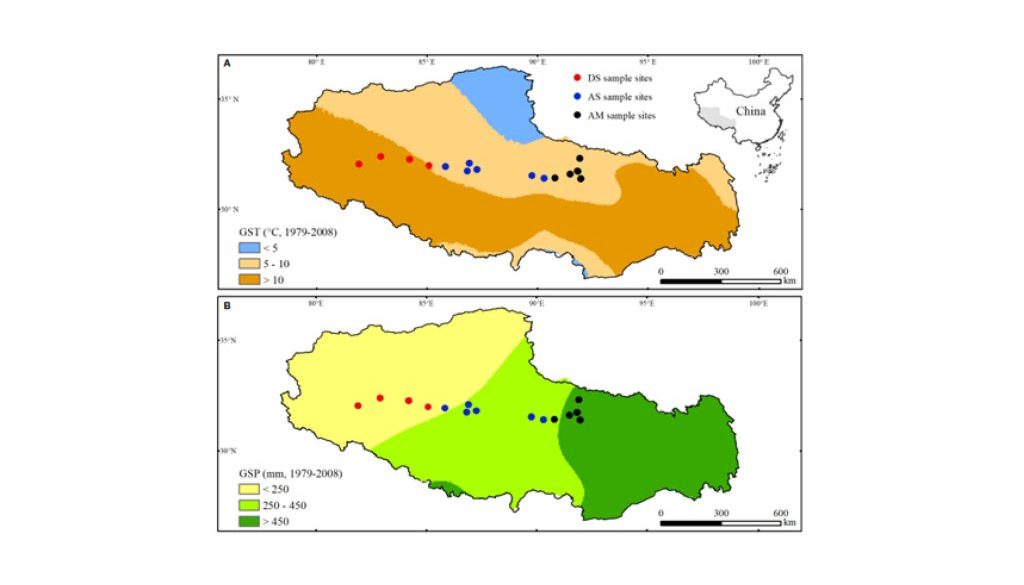Profesor Arkadiusz Nowak wraz z zespołem botaników z Polski, Chin i Niemiec ocenił wpływ zmiennych środowiskowych na rozwój roślinności alpejskiej, głównie łąk i tzw. mat alpejskich. Te typy roślinności są fundamentalne dla zachowania kultur pasterskich i produktywności traworośli w obszarze tzw. trzeciego bieguna Ziemi. Okazało się, że poprawa jakości pastwisk może nastąpić tylko przy utrzymaniu właściwej wilgotności wyrażonej przez sumę opadu w sezonie wegetacyjnym. Wyłączanie z wypasu poprzez grodzenie ma znacznie mniejsze znaczenie i nie daje bardzo dobrych rezultatów.
Abstract
Overgrazing and warming are thought to be responsible for the loss of species diversity, declined ecosystem productivity and soil nutrient availability of degraded grasslands on the Tibetan Plateau. Mineral elements in soils critically regulate plant individual’s growth, performance, reproduction, and survival. However, it is still unclear whether plant species diversity and biomass production can be improved indirectly via the recovery of mineral element availability at topsoils of degraded grasslands, via grazing exclusion by fencing for years. To answer this question, we measured plant species richness, Shannon-Wiener index, aboveground biomass, and mineral element contents of Ca, Cu, Fe, Mg, Mn, Zn, K and P at the top-layer (0 – 10 cm) soils at 15 pairs of fenced vs grazed matched sites from alpine meadows (n = 5), alpine steppes (n = 6), and desert-steppes (n = 4) across North Tibet. Our results showed that fencing only reduced the Shannon-Wiener index of alpine meadows, and did not alter aboveground biomass, species richness, and soil mineral contents within each grassland type, compared to adjacent open sites grazed by domestic livestock. Aboveground biomass first decreased and then increased along with the gradient of increasing Ca content but did not show any clear relationship with other mineral elements across the three different alpine grassland types. More than 45% of the variance in plant diversity indices and aboveground biomass across North Tibet can be explained by the sum precipitation during plant growing months. Structural equation modelling also confirmed that climatic variables could regulate biomass production directly and indirectly via soil mineral element (Ca) and plant diversity indices.
Guo C., Wesche K., Margarint M.C., Nowak A., Dembicz I., Wu J. 2022. Climate overrides fencing and soil mineral nutrients to affect plant diversity and biomass of alpine grasslands across North Tibet. Frontiers in Plant Science. 13:1024954. doi: 10.3389/fpls.2022.1024954 (IF=6.627; MNiSW=100

